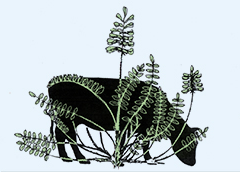Abstract
A 12-month survey of cyanogenesis in the fruits and leaves of Nandina domestica (Berberidaceae) revealed that the leaves are strongly cyanogenic throughout the year, as measured by the Feigl-Anger test. Fruits vary in their cyanogenic potential depending on the degree of ripeness and clone. Green fruits are strongly and rapidly cyanogenic, but most ripe fruits are weakly and slowly cyanogenic. Some fruits tested negative for cyanide. Fruits tend to become less cyanogenic the longer they remain on the plant, so birds feeding on older fruits are at a lower risk of poisoning. More than other frugivores, cedar waxwings (Bombycilla cedrorum) are susceptible to cyanide poisoning by N. domestica fruits because of their tendency to consume large numbers of fruits in a single feeding bout. Hypotheses are examined that might explain the evolutionary paradox of why N. domestica fruits are toxic to potential dispersers.
Recommended Citation
Zona, Scott
(2022)
"Fruits of Nandina domestica are (Sometimes) Cyanogenic and (Sometimes) Hazardous to Birds,"
Poisonous Plant Research (PPR): Vol. 5, p. 1-12.
DOI: https://doi.org/10.26077/hv81-8t11
Available at:
https://digitalcommons.usu.edu/poisonousplantresearch/vol5/iss1/1

